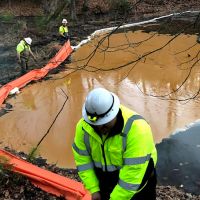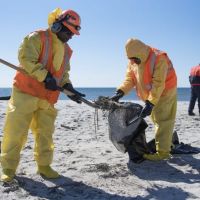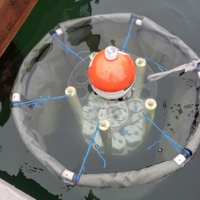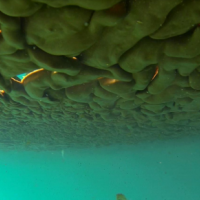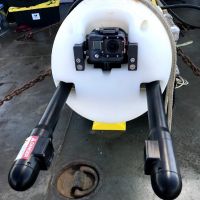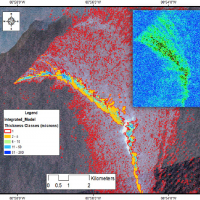Non-petroleum oils are a class of oils regulated by the U.S. EPA and include animal fats, oils, and greases, such as from fish and marine mammals; vegetable oils, from seeds, nuts, fruits, and kernels; and wood-derivative oils, such as resin/rosin.
OR&R Research Projects
The Interagency Coordinating Committee on Oil Pollution Research (ICCOPR) serves as a forum for OR&R scientists to share findings on their research, their development work associated with NOAA’s oil trajectory and fate models, awards and funding opportunities, training opportunities in oil and chemical spill response and planning, and the support that OR&R provides during hurricanes.
Bioassays, tests that expose animals to oil to measure the toxic impacts, are usually done in the lab with scientists attempting to recreate oil spill conditions. A new tool called a Drifting Exposure and Effects Assessment Ring (DEEAR) was developed to drift for 8-48 hours and perform bioassays in actual oil spills. This tool was tested in the natural oil seeps off the coast of Santa Barbara in 2019.
In 2019 a two-day workshop on coordinating advances in estimating and measuring oil slick thickness was held in partnership with NOAA Office of Response and Restoration, the Bureau of Safety and Environmental Enforcement (BSEE), with funding from Canada Oceans Protection Plan’s Multi-Partner Oil Spill Research Initiative, and hosted by the Coastal Response Research Center, University of New Hampshire.
Autonomous underwater vehicles (AUVs) present exciting opportunities to measure the extent and type of oil in the water column, especially at deeper depths, during oil spills.
Researchers customized a propeller-driven Remote Environmental Monitoring UnitS (REMUS), specifically a REMUS-600, with a suite of oil sensing tools. These included standard fluorometer and water quality sensors, as well as an innovative holographic camera and water samplers.
NOAA scientists teamed up with interdisciplinary partners to see if satellite technology, which was pioneered during Deepwater Horizon to detect and measure oil spill footprints on the surface of the ocean, is being advanced to estimate oil slick thickness.
 An official website of the United States government.
An official website of the United States government. 
